|
Les concentrations de CoQ10 furent diminuées de manière significative à la fois dans le plasma et le sang total des asthmatiques. RÉFÉRENCE:
Veuillez lire l'article complet (en anglais seulement) : Abstract BACKGROUND: The contribution of free oxygen radicals in the pathogenesis of bronchial asthma is generally accepted. The modulation of antioxidative defence by supplementation with antioxidants represents additive therapy in complex management of disease. The aim of the study was to assess the levels of coenzyme Q10, alpha-tocopherol, and beta-carotene both in plasma and whole blood, and malondialdehyde (MDA) and eosinophil cationic protein (ECP) in plasma of asthmatics (As). METHODS: Fifty-six As (15 males and 41 females) aged from 19 to 72 years (mean age 46 years) suffering from allergic asthma were enrolled into the study. The control group comprised 25 healthy volunteers (16 males, 9 females) aged 25-50 years. RESULTS: The concentrations of CoQ10 decreased significantly both in plasma and whole blood, compared with healthy volunteers (0.34 +/- 0.15 micromol/l vs. 0.52 +/- 0.15 micromol/l, 0.33 +/- 0.14 micromol/l vs. 0.50 +/- 0.13 micromol/l, P < 0.001, P< 0.001, respectively). The levels of alpha-tocopherol were decreased both in plasma and whole blood in comparison with controls [24.10 micromol/l (19.8; 30.5), vs. 33.20 micromol/l (28.25; 38.05), 17.22 +/- 6.45 micromol/l vs. 21.58 +/- 7.92 micromol/l, P= 0.006, P = 0.01, respectively]. The levels of MDA were elevated over the reference range in both groups (reference range < 4.5 micromol/l). No changes were seen in beta-carotene concentrations. Positive correlation was found between whole blood CoQ10 and alpha-tocopherol concentrations. CONCLUSION: Results of the study suggest a possible contribution of suboptimal concentrations of CoQ10 on antioxidative dysbalance in As and provide a rationale for its supplementation. Allergy. 2002 Sep;57(9):811-4. Decreased levels of coenzyme Q(10) in patients with bronchial asthma. Gazdík F1, Gvozdjáková A, Nádvorníková R, Repická L, Jahnová E, Kucharská J, Piják MR, Gazdíková K. Les niveaux de vitamine A et E étaient significativement plus faibles chez les sujets diabétiques de type II. RÉFÉRENCE:
Veuillez lire l'article complet (en anglais seulement) : Abstract Plasma vitamin A, C and E levels and erythrocyte antioxidant enzyme activities were investigated in type I and type II diabetic subjects with and without complications, i.e., hypertension, coronary artery disease and renal failure. Reverse phase HPLC was used to quantify vitamin A and E levels. We observed that the vitamin C levels were not significantly different between control and diabetic subjects. However, vitamin A and E levels were significantly lower in type I and type II diabetic subjects compared to controls. Superoxide dismutase (SOD) activity was significantly lower in type II, but not in type I, diabetic patients compared to controls. Interestingly, glutathione reductase and peroxidase activities were diminished in type I, but not in type II, diabetic subjects as compared to controls. Catalase activity was lower in both types of diabetic patients in comparison with their respective controls. Altogether these results suggest that diabetes mellitus may be associated with altered antioxidant status regardless to various complications. Gen Physiol Biophys. 2003 Mar;22(1):15-27. Antioxidant status and levels of different vitamins determined by high performance liquid chromatography in diabetic subjects with multiple complications. Merzouk S1, Hichami A, Madani S, Merzouk H, Berrouiguet AY, Prost J, Moutairou K, Chabane-Sari N, Khan NA. Les carences nutritionnelles spécifiques chez les patients présentant la maladie d'Alzheimer comprennent les acides gras oméga-3, plusieurs vitamines B et les antioxydants tels que les vitamines E et C. RÉFÉRENCE:
Veuillez lire l'article complet (en anglais seulement) : Abstract Epidemiological evidence linking nutrition to the incidence and risk of Alzheimer Disease is rapidly increasing. The specific nutritional deficiencies in Alzheimer patients may suggest a relative shortage of specific macro- and micronutrients. These include omega-3 fatty acids, several B-vitamins and antioxidants such as vitamins E and C. Recent mechanistic studies in cell systems and animal models also support the idea that nutritional components are able to counteract specific aspects of the neurodegenerative and pathological processes in the brain. In addition, it has been shown that several nutritional components can also effectively stimulate membrane formation and synapse formation as well as improve behavior and cerebrovascular health.The suggested synergy between nutritional components to improve neuronal plasticity and function is supported by epidemiological studies as well as experimental studies in animal models. The ability of nutritional compositions to stimulate synapse formation and effectively reduce Alzheimer Disease neuropathology in these preclinical models provides a solid basis to predict potential to modify the disease process, especially during the early phases of Alzheimer Disease. Eur J Pharmacol. 2008 May 6;585(1):197-207. doi: 10.1016/j.ejphar.2008.01.049. Epub 2008 Mar 4. The potential role of nutritional components in the management of Alzheimer's Disease. van der Beek EM1, Kamphuis PJ. Des études cliniques ont démontré l'efficacité de la supplémentation du calcium, cuivre, manganèse et zinc pour la densité minérale osseuse de la colonne vertébrale chez la femme ménopausée. Chacune de ces études ont démontré l’importance des oligo-éléments pour le développement optimal de la matrice osseuse et du maintien de la densité osseuse. RÉFÉRENCE:
Veuillez lire l'article complet (en anglais seulement) : Abstract Osteoporosis is a multifactorial disease with dimensions of genetics, endocrine function, exercise and nutritional considerations. Of particular considerations are calcium (Ca) status, Vitamin D, fluoride, magnesium and other trace elements. Several trace elements, particularly copper (Cu), manganese (Mn) and zinc (Zn), are essential in bone metabolism as cofactors for specific enzymes. Our investigations regarding the role of Cu, Mn and Zn in bone metabolism include data from studies with animals on Cu- and Mn-deficient diets. We have also demonstrated cellular deficiencies using bone powder implants, as well as fundamental changes in organic matrix constituents. In clinical studies we have demonstrated the efficacy of Ca, Cu, Mn and Zn supplementation on spinal bone mineral density in postmenopausal women. Each of these studies demonstrated the necessity of trace elements for optimal bone matrix development and bone density sustenance. J Am Coll Nutr. 1993 Aug;12(4):384-9. The role of trace minerals in osteoporosis. Saltman PD1, Strause LG. Les patients atteints du syndrome fibromyalgique sécrètent moins de mélatonine pendant les heures d'obscurité que les sujets sains. Cela pourrait contribuer à altérer le sommeil durant la nuit, à causer de la fatigue pendant la journée et à modifier la perception de la douleur. RÉFÉRENCE:
Veuillez lire l'article complet (en anglais seulement) : Abstract Fibromyalgia syndrome (FMS) is a complex chronic condition causing widespread pain and variety of other symptoms. It produces pain in the soft tissues located around joints throughout the body. FMS has unknown etiology and its pathophysiology is not fully understood. However, abnormality in circadian rhythm of hormonal profiles and cytokines has been observed in this disorder. Moreover, there are reports of deficiency of serotonin, melatonin, cortisol and cytokines in FMS patients, which are fully regulated by circadian rhythm. Melatonin, the primary hormone of the pineal gland regulates the body's circadian rhythm and normally its levels begin to rise in the mid-to-late evening, remain high for most of the night, and then decrease in the early morning. FMS patients have lower melatonin secretion during the hours of darkness than the healthy subjects. This may contribute to impaired sleep at night, fatigue during the day and changed pain perception. Studies have shown blunting of normal diurnal cortisol rhythm, with elevated evening serum cortisol level in patients with FMS. Thus, due to perturbed level of cortisol secretion several symptoms of FMS may occur. Moreover, disturbed cytokine levels have also been reported in FMS patients. Therefore, circadian rhythm can be an important factor in the pathophysiology, diagnosis and treatment of FMS. This article explores the circadian pattern of abnormalities in FMS patients, as this may help in better understanding the role of variation in symptoms of FMS and its possible relationship with circadian variations of melatonin, cortisol, cytokines and serotonin levels. Indian J Biochem Biophys. 2011 Apr;48(2):82-7. Abnormality of circadian rhythm of serum melatonin and other biochemical parameters in fibromyalgia syndrome. Mahdi AA1, Fatima G, Das SK, Verma NS. Les apports alimentaires en acide folique et en vitamine B6 ont été inversement associés à la mortalité par insuffisance cardiaque chez les hommes et à la mortalité par accident vasculaire cérébral, par maladie coronarienne et par maladie cardiovasculaire totale chez les femmes. RÉFÉRENCE:
Veuillez lire l'article complet (en anglais seulement) : Abstract BACKGROUND AND PURPOSE: The association of dietary folate and B vitamin intakes with risk of cardiovascular disease is controversial, and the evidence in Asian populations is limited. METHODS: A total of 23 119 men and 35 611 women, age 40 to 79 years, completed a food frequency questionnaire in the Japan Collaborative Cohort Study. During the median 14-year follow-up, there were 986 deaths from stroke, 424 from coronary heart disease, and 2087 from cardiovascular disease. RESULTS: Dietary folate and vitamin B(6) intakes were inversely associated with mortality from heart failure for men and with mortality from stroke, coronary heart disease, and total cardiovascular disease for women. These inverse associations did not change materially after adjustment for cardiovascular risk factors. No association was found between vitamin B(12) intake and mortality risk. CONCLUSIONS: High dietary intakes of folate and vitamin B(6) were associated with reduced risk of mortality from stroke, coronary heart disease, and heart failure among Japanese. Stroke. 2010 Jun;41(6):1285-9. doi: 10.1161/STROKEAHA.110.578906. Epub 2010 Apr 15. Dietary folate and vitamin b6 and B12 intake in relation to mortality from cardiovascular diseases: Japan collaborative cohort study. Cui R1, Iso H, Date C, Kikuchi S, Tamakoshi A; Japan Collaborative Cohort Study Group. Les résultats suggèrent que de faibles niveaux tissulaires d'acides gras oméga-3, seraient un facteur de risque de tentative suicidaire. RÉFÉRENCE:
Veuillez lire l'article complet (en anglais seulement) : Abstract BACKGROUND: Epidemiologic studies show that low fish intake is a risk factor of suicidality; however, there are no case-control studies investigating suicide attempt risk and tissue n-3 fatty acid levels. METHODS: We recruited 100 suicide-attempt cases and another 100 control patients injured by accidents who were admitted to three hospitals affiliated with Dalian Medical University in Dalian, China. Case and control subjects were matched for age, gender, and smoking status. Those who were inebriated at the time of hospitalization were excluded. Blood was sampled immediately after admission to a hospital. Washed red blood cells (RBCs) were obtained, and the fatty acid composition of the total RBC phospholipid fraction was analyzed by gas chromatography. RESULTS: Eicosapentaenoic acid (EPA) levels in RBC in the case subjects were significantly lower than those of the control subjects (.74 +/-.52% vs. 1.06 +/-.62%, p <.0001). When the highest and lowest quartiles of EPA in RBC were compared, the odds ratios of suicide attempt was.12 in the highest quartile (95% confidence interval:.04-.36, p for trend =.0001) after adjustment for possible confounding factors. CONCLUSIONS: Our findings suggest that low n-3 fatty acid levels in tissues were a risk factor of suicide attempt. Further studies including intervention with fish oil are warranted. http://www.ncbi.nlm.nih.gov/pubmed/15450784 Biol Psychiatry. 2004 Oct 1;56(7):490-6. Suicide attempt and n-3 fatty acid levels in red blood cells: a case control study in China. Huan M1, Hamazaki K, Sun Y, Itomura M, Liu H, Kang W, Watanabe S, Terasawa K, Hamazaki T. Parmi les participants ayant les plus faibles taux sériques de vitamine C, de zéaxanthine, de vitamine E et de zinc, l'exposition à la lumière bleue augmentait de façon significative le risque de dégénérescence maculaire avancée. Veuillez lire l'article complet (en anglais seulement) :
Abstract OBJECTIVE: To examine the association of sunlight exposure and antioxidant level with age-related macular degeneration (AMD). METHODS: Four thousand seven hundred fifty-three participants aged 65 years or older in the European Eye Study underwent fundus photography, were interviewed for adult lifetime sunlight exposure, and gave blood for antioxidant analysis. Blue light exposure was estimated by combining meteorologic and questionnaire data. RESULTS: Data on sunlight exposure and antioxidants were available in 101 individuals with neovascular AMD, 2182 with early AMD, and 2117 controls. No association was found between blue light exposure and neovascular or early AMD. Significant associations were found between blue light exposure and neovascular AMD in individuals in the quartile of lowest antioxidant level-vitamin C, zeaxanthin, vitamin E, and dietary zinc-with an odds ratio of about 1.4 for 1 standard deviation unit increase in blue light exposure. Higher odds ratios for blue light were observed with combined low antioxidant levels, especially vitamin C, zeaxanthin, and vitamin E (odds ratio, 3.7; 95% confidence interval, 1.6-8.9), which were also associated with early stages of AMD. CONCLUSIONS: Although it is not possible to establish causality between sunlight exposure and neovascular AMD, our results suggest that people in the general population should use ocular protection and follow dietary recommendations for the key antioxidant nutrients. RÉFÉRENCE: http://www.ncbi.nlm.nih.gov/pubmed/18852418 Arch Ophthalmol. 2008 Oct;126(10):1396-403. doi: 10.1001/archopht.126.10.1396. Sunlight exposure, antioxidants, and age-related macular degeneration. Fletcher AE1, Bentham GC, Agnew M, Young IS, Augood C, Chakravarthy U, de Jong PT, Rahu M, Seland J, Soubrane G, Tomazzoli L, Topouzis F,Vingerling JR, Vioque J. Les patients ayant la polyarthrite rhumatoïde atteints du syndrome fibromyalgique avaient des niveaux significativement plus faibles en vitamine D que ceux n’en étaient pas atteints. Veuillez lire l'article complet (en anglais seulement) :
RÉFÉRENCE: Abstract AIM: To assess vitamin D levels in rheumatoid arthritis (RA) patients and to find their relation to clinical parameters, fibromyalgia syndrome (FMS), quality of life (QoL) and disease activity. METHODS: The study included 63 RA patients and 62 controls. Clinical examination and laboratory investigations were performed. For patients, the Disease Activity Score (DAS-28), QoL index, Health Assessment Questionnaire II (HAQ II) and Modified Larsen score were calculated. 25-OH-vitamin D was measured in patients and controls. RESULTS: The patients' mean age was 41.59 ± 9.69 years and disease duration 5.89 ± 3.67 years. The level of vitamin D in RA patients was significantly lower (23.11 ± 12.71 ng/mL) than that in the controls (32.59 ± 13.06 ng/mL) (P = 0.005) being deficient in 50.8%, insufficient in 23.8% and normal in 25.4%. The RA patients with FMS (n = 33) had significantly lower levels of vitamin D (19.08 ± 10.59 ng/mL) than those without (27.55 ± 13.51 ng/mL) (P = 0.008). The difference was significant on comparing those receiving hydroxychloroquine (17.39 ± 7.84 ng/mL) to those not (31.85 ± 13.85 ng/mL) (P < 0.001). Vitamin D significantly correlated with QoL index (r = 0.58, P < 0.001) and negatively with HAQ II (r = -0.36, P = 0.004) and BMI (r = -0.39, P = 0.001). CONCLUSION: Special attention is required regarding vitamin D levels in RA patients with FMS and decreased QoL. Vitamin D should be corrected and supplementation considered among the RA management armamentarium. http://www.ncbi.nlm.nih.gov/pubmed/25291242 Int J Rheum Dis. 2016 Mar;19(3):294-9. doi: 10.1111/1756-185X.12426. Epub 2014 Oct 7. Vitamin D status in rheumatoid arthritis patients: relation to clinical manifestations, disease activity, quality of life and fibromyalgia syndrome. Gheita TA1, Sayed S1, Gheita HA2, Kenawy SA3. L'efficacité des médicaments chimiothérapeutiques et de la radiothérapie furent améliorées lorsque le régime alimentaire comprenait des acides gras oméga-3 (n-3). Veuillez lire l'article complet (en anglais seulement) :
RÉFÉRENCE: Abstract Supplementing the diet of tumor-bearing mice or rats with oils containing (n-3) (omega-3) or with purified (n-3) fatty acids has slowed the growth of various types of cancers, including lung, colon, mammary, and prostate. The efficacy of cancer chemotherapy drugs such as doxorubicin, epirubicin, CPT-11, 5-fluorouracil, and tamoxifen, and of radiation therapy has been improved when the diet included (n-3) fatty acids. Some potential mechanisms for the activity of (n-3) fatty acids against cancer include modulation of eicosanoid production and inflammation, angiogenesis, proliferation, susceptibility for apoptosis, and estrogen signaling. In humans, (n-3) fatty acids have also been used to suppress cancer-associated cachexia and to improve the quality of life. In one study, the response to chemotherapy therapy was better in breast cancer patients with higher levels of (n-3) fatty acids in adipose tissue [indicating past consumption of (n-3) fatty acids] than in patients with lower levels of (n-3) fatty acids. Thus, in combination with standard treatments, supplementing the diet with (n-3) fatty acids may be a nontoxic means to improve cancer treatment outcomes and may slow or prevent recurrence of cancer. Used alone, an (n-3) supplement may be a useful alternative therapy for patients who are not candidates for standard toxic cancer therapies. http://www.ncbi.nlm.nih.gov/pubmed/15570049 J Nutr. 2004 Dec;134(12 Suppl):3427S-3430S. (n-3) fatty acids and cancer therapy. Hardman WE1. Les extraits de curcuma sont aussi efficaces que l'ibuprofène pour le traitement de l'arthrose du genou. Veuillez lire l'article complet (en anglais seulement) :
RÉFÉRENCE: Abstract OBJECTIVE: To determine the efficacy and safety of Curcuma domestica extracts in pain reduction and functional improvement. METHODS: 367 primary knee osteoarthritis patients with a pain score of 5 or higher were randomized to receive ibuprofen 1,200 mg/day or C. domestica extracts 1,500 mg/day for 4 weeks. The main outcomes were Western Ontario and McMaster Universities Osteoarthritis Index (WOMAC) total, WOMAC pain, WOMAC stiffness, and WOMAC function scores. Adverse events (AEs) were also recorded. RESULTS: 185 and 182 patients were randomly assigned into C. domestica extracts and ibuprofen groups, respectively. The baseline characteristics were no different between groups. The mean of all WOMAC scores at weeks 0, 2, and 4 showed significant improvement when compared with the baseline in both groups. After using the noninferiority test, the mean difference (95% confidence interval) of WOMAC total, WOMAC pain, and WOMAC function scores at week 4 adjusted by values at week 0 of C. domestica extracts were noninferior to those for the ibuprofen group (P=0.010, P=0.018, and P=0.010, respectively), except for the WOMAC stiffness subscale, which showed a trend toward significance (P=0.060). The number of patients who developed AEs was no different between groups. However, the number of events of abdominal pain/discomfort was significantly higher in the ibuprofen group than that in the C. domestica extracts group (P=0.046). Most subjects (96%-97%) were satisfied with the treatment, and two-thirds rated themselves as improved in a global assessment. CONCLUSION: CURCUMA domestica extracts are as effective as ibuprofen for the treatment of knee osteoarthritis. The side effect profile was similar but with fewer gastrointestinal AE reports in the C. domestica extracts group. http://www.ncbi.nlm.nih.gov/pubmed/24672232 Clin Interv Aging. 2014 Mar 20;9:451-8. doi: 10.2147/CIA.S58535. eCollection 2014. Efficacy and safety of Curcuma domestica extracts compared with ibuprofen in patients with knee osteoarthritis: a multicenter study. Kuptniratsaikul V1, Dajpratham P1, Taechaarpornkul W2, Buntragulpoontawee M3, Lukkanapichonchut P4, Chootip C5, Saengsuwan J6, Tantayakom K7,Laongpech S8. Le traitement avec les vitamines C et E diminue la production de superoxydes et lésions des reins et empêche la diminution de la fonction rénale. Veuillez lire l'article complet (en anglais seulement) :
RÉFÉRENCE: Abstract Reactive oxygen species (ROS) are elevated in humans with hypertension many of which develop end-stage renal disease (ESRD), and antioxidant capacity is decreased. About one-half of essential hypertensives have a salt-sensitive type of hypertension, and the amount of renal damage that occurs in salt-sensitive hypertensives greatly exceeds that of non-salt-sensitive hypertensives. Antioxidant therapy can improve cardiovascular outcomes in humans but only if sufficient doses are used. Salt-sensitive hypertensive animal models, especially Dahl salt-sensitive rats, have been used to investigate the relationship between hypertension, ROS and end-stage renal damage. In experimental salt-sensitive hypertension, ROS increase and significant renal damage occur. In the Dahl salt-sensitive (S) rat on high Na for 3 weeks, renal damage is mild, renal levels of superoxide dismutase are decreased, and treatment with Tempol reduces arterial pressure. In the Dahl S rat on high Na for 5 weeks, renal damage is severe, GFR and renal plasma flow are decreased, and renal superoxide production is high. Treatment with vitamins C and E decreases renal superoxide production and renal damage and prevents the decrease in renal hemodynamics. Antioxidant treatment reduces arterial pressure, aortic superoxide production and renal inflammation in DOCA-salt rats, and decreases blood pressure and aortic superoxide release and increases bioactive nitric oxide in SHR stroke-prone rats. In conclusion, in both human and experimental salt-sensitive hypertension, superoxide production and renal damage are increased, antioxidant capacity is decreased, and antioxidant therapy can be helpful. http://www.ncbi.nlm.nih.gov/pubmed/15956781 Am J Nephrol. 2005 Jul-Aug;25(4):311-7. Epub 2005 Jun 14. Oxidative stress and antioxidant treatment in hypertension and the associated renal damage. Manning RD Jr1, Tian N, Meng S. L'ENVIRONEMENT
Les facteurs environnementaux:
DR. ZOLTAN RONA - 70000 NOUVEAUX PRODUITS CHIMIQUES AJOUTÉS À NOTRE ENVIRONNEMENT DEPUIS LES ANNÉES 1940 IL A DIT: « La situation idéale serait d'avoir un système de soins de santé préventive qui teste les enfants pour les carences en vitamines, minéraux et acides aminés.
La supplémentation avec une multivitamine peut améliorer leur statut en micronutriments à des niveaux associés à un risque réduit pour plusieurs maladies chroniques. RÉFÉRENCE:
Abstract - BACKGROUND: Inadequate micronutrient intake among older adults is common despite the increased prevalence of fortified/enriched foods in the American diet. Although many older adults take multivitamin supplements in an effort to compensate, studies examining the benefits of this behavior are absent. OBJECTIVE: To determine whether a daily multivitamin/mineral supplement can improve micronutrient status, plasma antioxidant capacity and cytokine production in healthy, free-living older adults already consuming a fortified diet. METHODS: An eight-week double-blind, placebo-controlled clinical trial among 80 adults aged 50 to 87 years (mean = 66.5 +/- 8.6 years). RESULTS: Multivitamin treatment significantly increased (p<0.01, compared to placebo) plasma concentrations of vitamins D (77 to 100 nmol/L), E (27 to 32 micromol/L), pyridoxal phosphate (55.1 to 75.2 nmol/L), folate (23 to 33 nmol/L), B12 (286 to 326 pmol/L)), C (55 to 71 micromol/L), and improved the riboflavin activity coefficient (1.23 to 1.15), but not vitamins A and thiamin. The multivitamin reduced the prevalence of suboptimal plasma levels of vitamins E (p=0.003), B12 (p=0.004), and C (p=0.08). Neither glutathione peroxidase activity nor antioxidant capacity (ORAC) were affected. No changes were observed in interleukin-2, -6 or -10 and prostaglandin E2, proxy measures of immune responses. CONCLUSIONS: Supplementation with a multivitamin formulated at about 100% Daily Value can decrease the prevalence of suboptimal vitamin status in older adults and improve their micronutrient status to levels associated with reduced risk for several chronic diseases. http://www.ncbi.nlm.nih.gov/pubmed/11022875 J Am Coll Nutr. 2000 Oct;19(5):613-21. The effects of a multivitamin/mineral supplement on micronutrient status, antioxidant capacity and cytokine production in healthy older adults consuming a fortified diet. McKay DL1, Perrone G, Rasmussen H, Dallal G, Hartman W, Cao G, Prior RL, Roubenoff R, Blumberg JB. La carence en vitamine D a été associée ou impliquée dans la physiopathologie des affections gastro-intestinales, des maladies inflammatoires de l'intestin, du cancer colorectal ainsi que dans la dépression. Veuillez lire l'article complet (en anglais seulement) :
Abstract BACKGROUND: Vitamin D deficiency has been associated or implicated with the pathophysiology of the gastrointestinal conditions inflammatory bowel disease and colorectal cancer, as well as with depression. No trials or epidemiology studies to date have investigated a link with irritable bowel syndrome (IBS). A single case report has suggested a benefit in IBS of vitamin D supplementation. We hypothesised that IBS participants with vitamin D insufficiency would benefit from repletion in terms of their IBS symptoms. We undertook a pilot trial to provide data to support a power calculation and to justify a full trial. METHODS: This was a randomised, double blinded, three-arm parallel design trial of vitamin D, placebo or a combination of vitamin D and probiotics. Participants were further stratified according to whether they were vitamin D replete or insufficient. Vitamin D status was determined by blood test at baseline and exit; IBS symptoms were assessed by validated questionnaire; dietary intakes were assessed by food frequency questionnaire. RESULTS: A significant proportion of the IBS population were vitamin D deficient, such that the replete stratum could not be adequately recruited. There was a significant association in the baseline data between circulating vitamin D level and quality of life ("How much has IBS affected your life?"). Supplementation significantly improved vitamin D level versus placebo. IBS symptoms were not significantly improved in this pilot, although a power calculation was enabled from the intervention data. CONCLUSIONS: The IBS population exhibits significant levels of vitamin D insufficiency and would benefit from screening and possible supplementation. The impact of IBS on quality of life may be reduced by vitamin D level. Future trials should have a sample size of over 97. RÉFÉRENCE: http://www.ncbi.nlm.nih.gov/pubmed/26719813 BMJ Open Gastroenterol. 2015 Dec 21;2(1):e000052. doi: 10.1136/bmjgast-2015-000052. eCollection 2015. Vitamin D associates with improved quality of life in participants with irritable bowel syndrome: outcomes from a pilot trial. Tazzyman S1, Richards N1, Trueman AR1, Evans AL1, Grant VA1, Garaiova I2, Plummer SF2, Williams EA3, Corfe BM1. Les résultats ont démontré que la coenzyme Q10 avait la capacité de supprimer la voie inflammatoire de la sclérose en plaques. Veuillez lire l'article complet (en anglais seulement) :
Abstract BACKGROUND: Multiple sclerosis (MS) is known as a progressive central nervous system inflammatory disease. Certain factors, such as interleukins, inflammatory cells, and oxidative stress are supposed to involve in MS etiology. Because of the important role of oxidative stress, antioxidant therapy for MS has received more attention. Although coenzyme Q10 (CoQ10) acts as an antioxidant, there is a lack of enough research on its effects on MS. Therefore, the present research was designed. METHODS: C57BL/6 female adult mice (n = 30) were used in this study. The animals were randomly divided into trial and control groups. To induce MS, routine procedure for experimental autoimmune encephalomyelitis (EAE) was used, and scoring was performed based on clinical signs. By detecting score one, CoQ10 administration was started (10 mg/kg/three weeks). By using ELISA and real-time PCR, the brain levels of TNF-, IL-10, IL-4, and IL-12 were studied. Statistical tests were used to analyze the data and the P value less than 0.05 was considered to be significant. RESULTS: Clinical symptoms in EAE animals were significantly decreased (P<0.05) as compared to control ones. In addition, the level of the TNF- was significantly decreased following CoQ10 administration versus IL-10. The ratio of TH1/TH2 interleukins in treated animals was significantly less than that in non-treated animals (P<0.01). CONCLUSION: Our findings showed that CoQ10 is capable of suppressing the inflammatory pathway of MS. RÉFÉRENCE: http://www.ncbi.nlm.nih.gov/pubmed/25326018 Iran Biomed J. 2014;18(4):203-11. Effects of coenzyme Q10 on the ratio of TH1/TH2 in experimental autoimmune encephalomyelitis model of multiple sclerosis in C57BL/6. Soleimani M1, Jameie SB, Barati M, Mehdizadeh M, Kerdari M. |
AVIS IMPORTANT:
Veuillez prendre connaissance de cet avertissement et rappelez-vous que le site www.drsuciu.com ne saurait remplacer une consultation avec vos professionnels de la santé. L'information fournie sur le site web www.drsuciu.com est d'ordre général. Avant de prendre toute décision de nature médicale ou si vous avez des questions concernant votre état de santé personnel, adressez-vous à un professionnel de la santé qualifiée. D'aucune manière ces points de vue, commentaires et renseignements ne constituent une recommandation de traitement (préventif ou curatif), une ordonnance ou un diagnostic, ni ne doivent être considérés comme tels. Archives
Août 2017
|
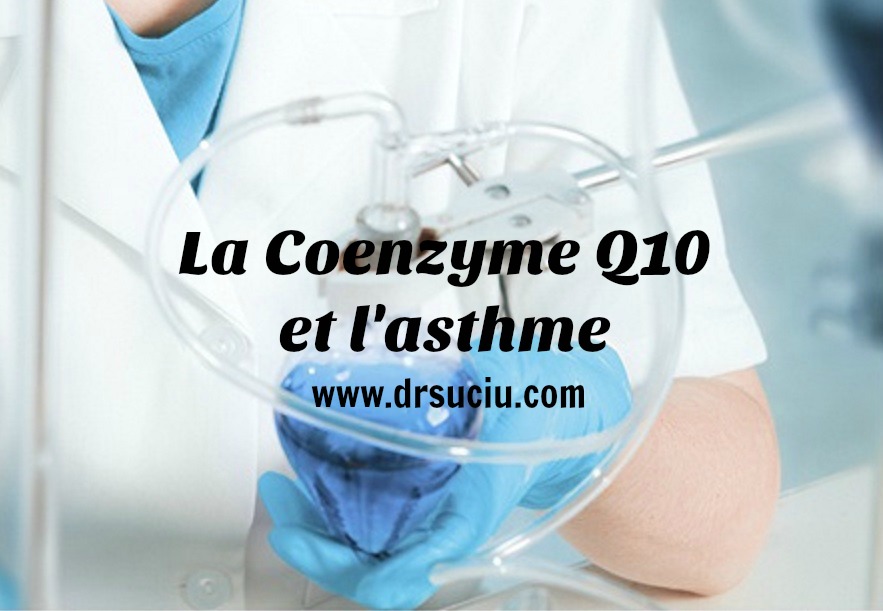
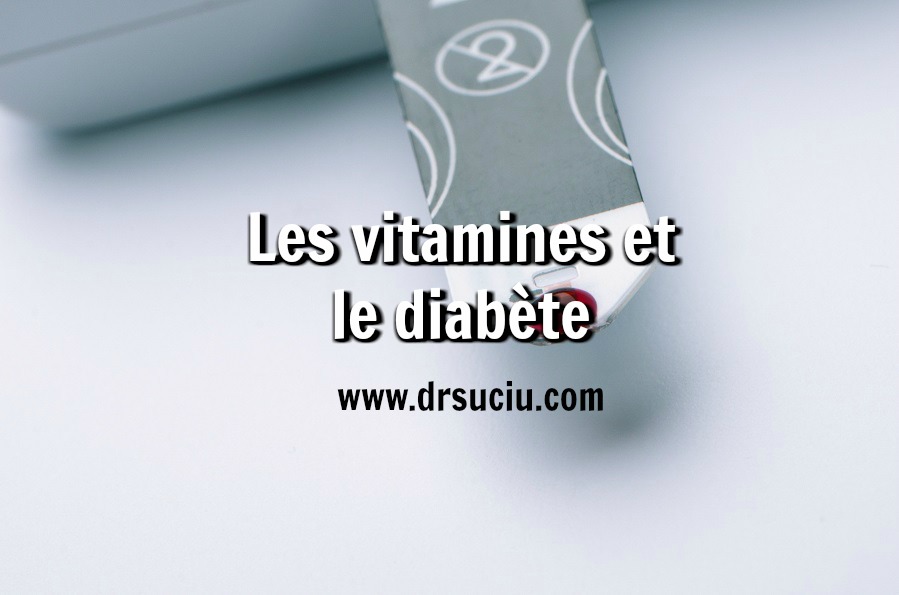
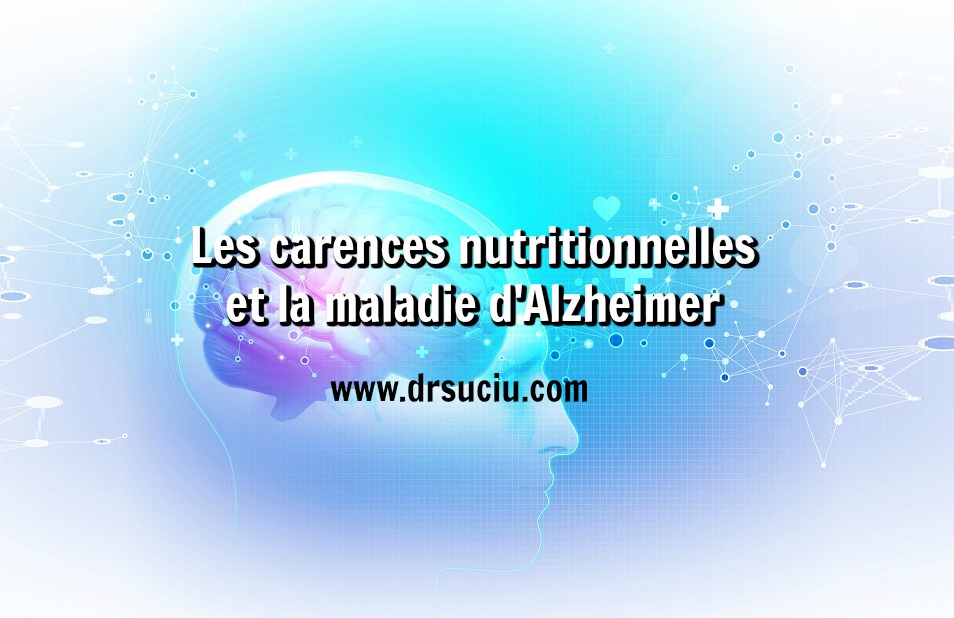
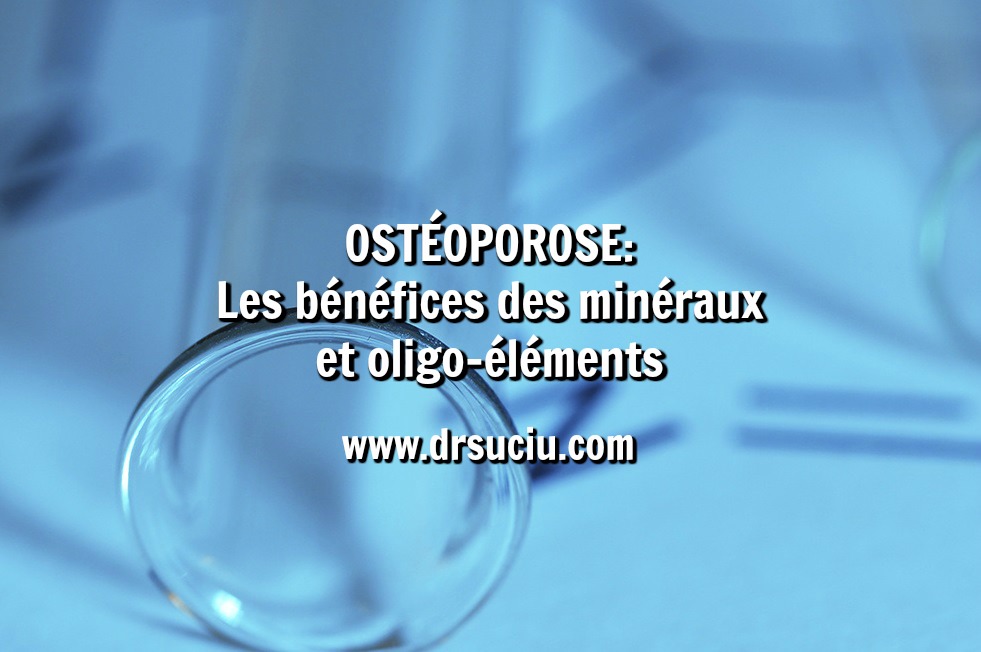

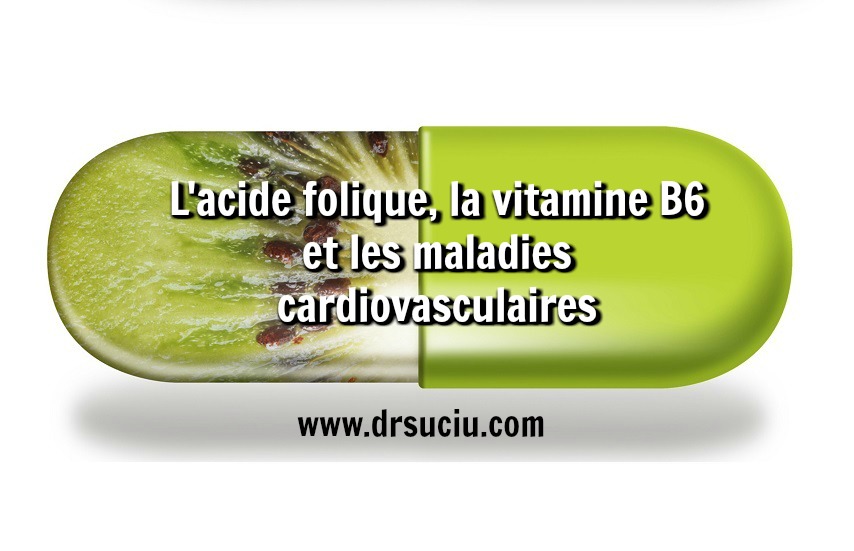
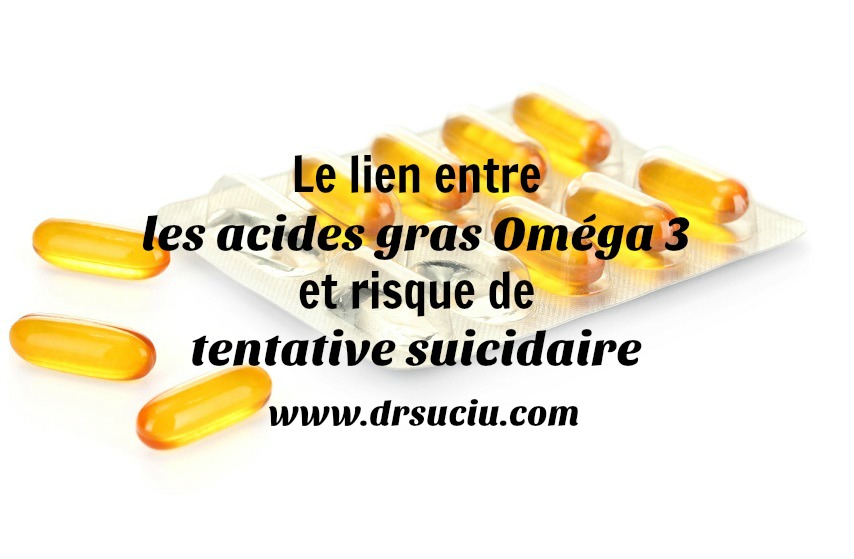
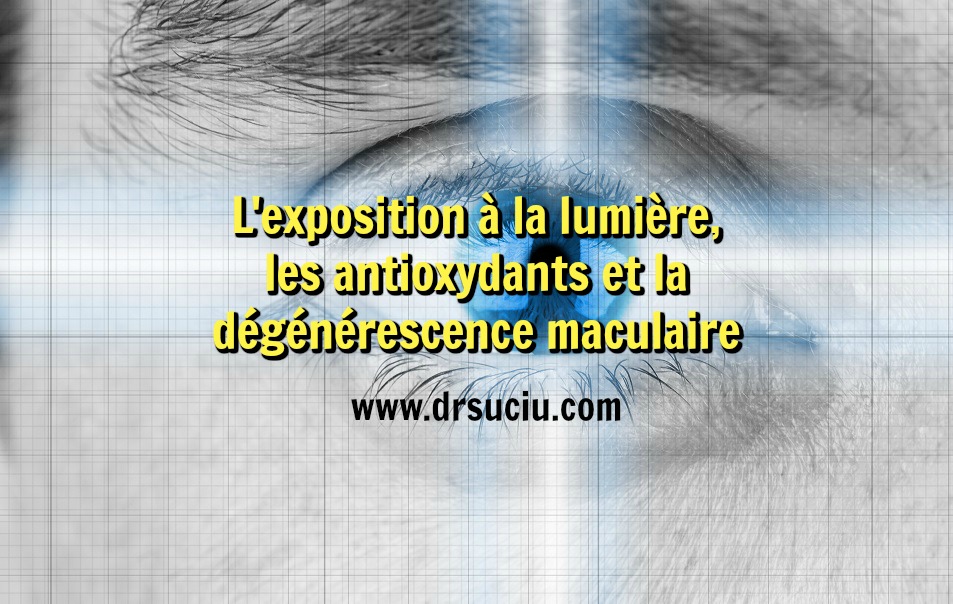
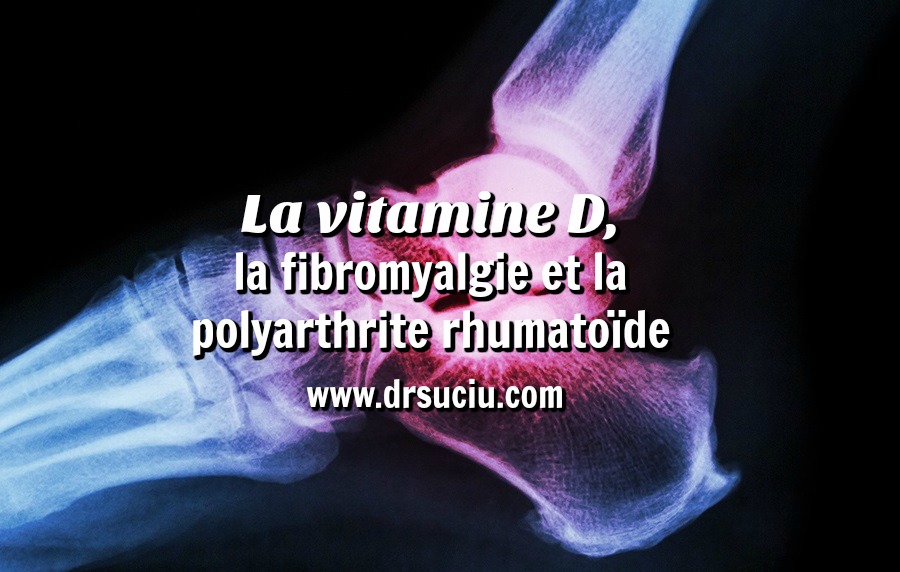

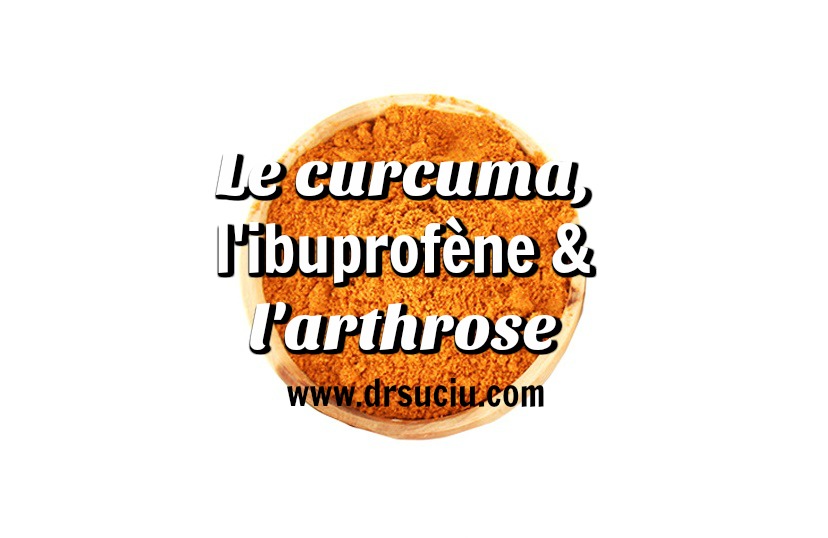
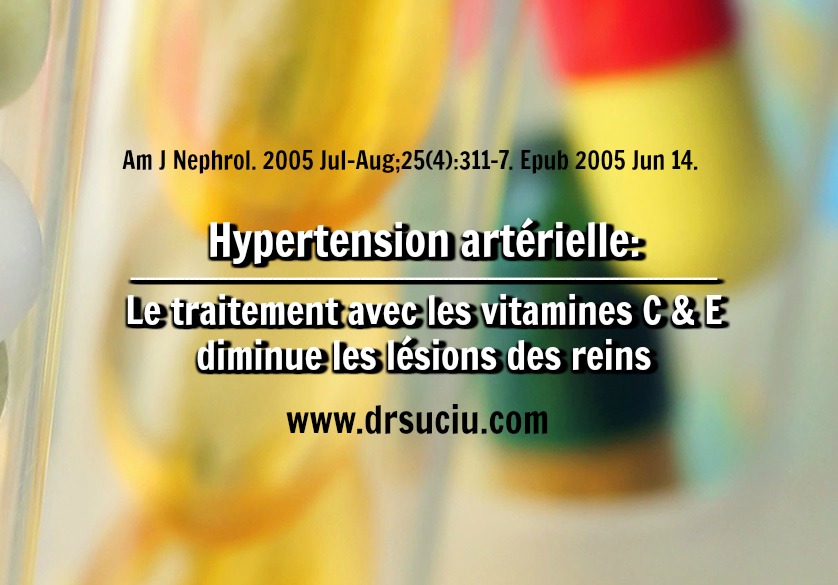




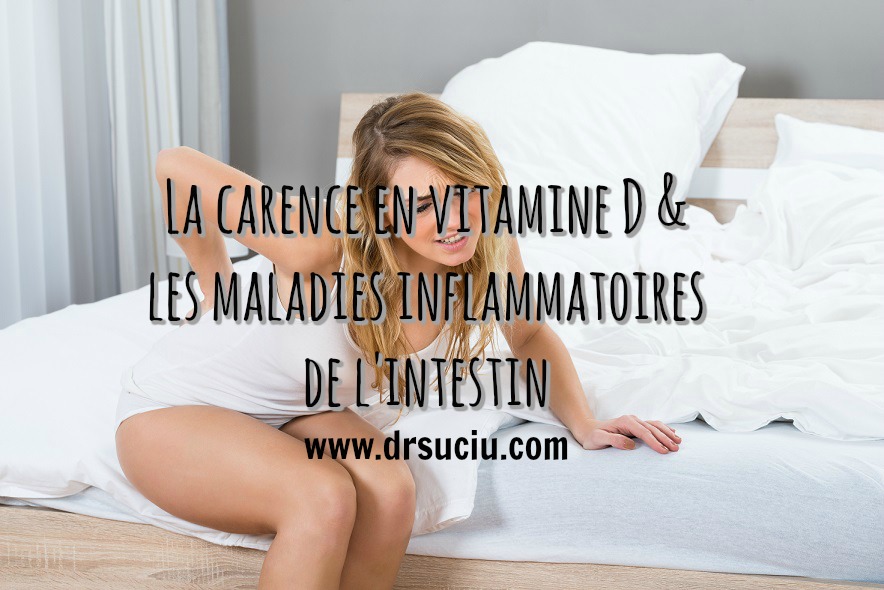
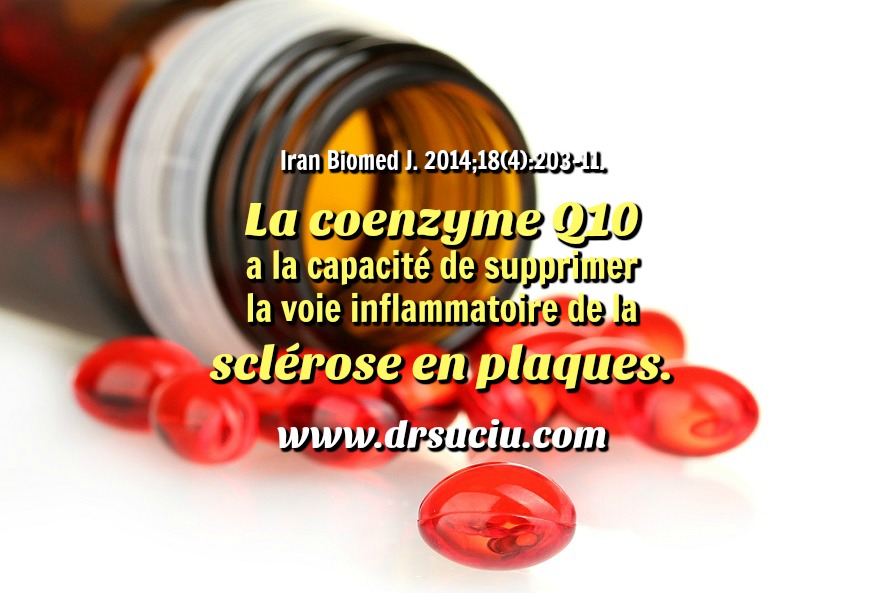


 Flux RSS
Flux RSS